 |
Interview with Raven |
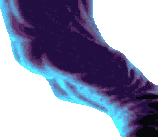 |
 |
Interview with Raven |
 |
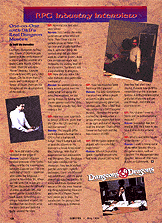 This interview is by Indill the Incredible from the May 1994 issue
of GamePro Magazine. I typed it up
for you instead of just providing the scan.
Now on with the interview!
This interview is by Indill the Incredible from the May 1994 issue
of GamePro Magazine. I typed it up
for you instead of just providing the scan.
Now on with the interview!
Capcom's Dungeons & Dragons: Tower of Doom arcade game took the enthusiasm of a player and the wisdom of a grand Game Master (GM) to create. That GM was Alex "Raven" Jimenez, Capcom USA's in-house RPG guru, D&D player, GM for more than 17 years, and co-designer of Tower of Doom. Here are his thoughts on the development of the coin-op.
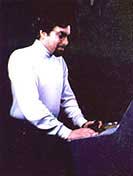
GP: How did you become involved in the project?
Raven: Capcom of Japan needed someone in the States would be the intermediary between Capcom and TSR (the publisher of D&D) - someone who spoke the language. I joined in November '91. When we met with TSR in January '92, we discussed the difficulty of doing an arcade RPG that wasn't purely a punch/kick/slash game. Something very unique happened instead. We decided that we should write the story first and built the game around the story.
GP: How did you test your story ideas?
Raven: First I wrote the entire game into an actual D&D scenario. Then I took it to my gamers group at Planet 10 in San Jose and actually had them play it, with me GMing. We learned what did and didn't work by what the players liked. One revision we made was increasing the starting level of the characters, but there's still a big challenge to progress.
GP: How did you make D&D rules translate into game-play mechanics?
Raven: We wanted players to have actual control over the game while still using the rules. For example, we did saving throws by having the player quickly shake the stick. This motion actually feels like rolling a die!
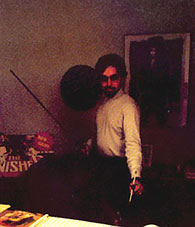
GP: How was your approach to design different, given that the GM is the CPU and not a real live person?
Raven: The biggest difference between a human and a CPU is that a human will fudge. They'll fudge a die roll, or give the players or the monsters a break to increase the challenge. With that in mind, we put two innovations into the game. One, the player has more control over his character. Two, we branched out the story with multiple pathways. There are different sub-adventures, and the game doesn't go stale too quickly. In every adventure I've ever written as a GM, the most frustrating thing is knowing there are parts of the PCs (Playable Characters) never get to play. The satisfaction I'm going to feel with the coin-up is immense.
GP: How has the response been from real D&D players?
Raven: The best compliment I received was when a player at Gen•Con (the world's largest role-playing game convention) said, "This is D&D that was written by a DM (Dungeon Master)." The other thing that cracked me up was when a group of four players had beaten an ogre and start arguing over the treasure. That's when I knew we had captured the true essence of D&D.
GP: Will the game appeal to players who have no D&D experience?
Raven: When I created this game, I wanted people who had never played D&D to feel that they had after they played. If you're new to RPGs, remember that this is an epic fantasy. A little common sense and a lot of bravery will get you through. And think like your character.
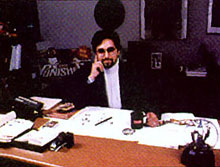
GP: Any chance Tower of Doom will be published as a module?
Raven: (smirking) Ask Jim Ward at TSR. We'll have to see how it does in the arcades.
GP: What's next in the future of the Raven?
Raven: I want to bring some of my other favorite RPGs to the game screen, such as Vampire: The Masquerade (my favorite), Werewolf: The Apocalypse, or Cyberpunk.